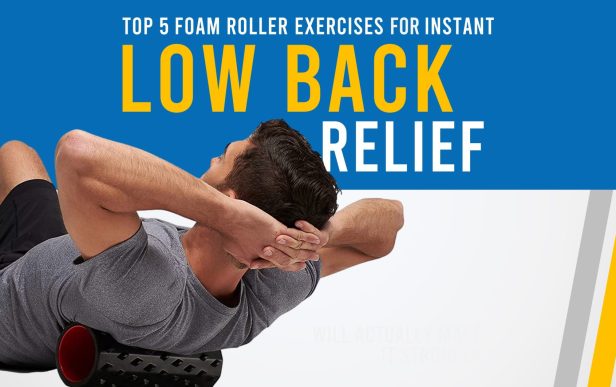The 3 Things Your Doctor Didn’t Tell You About Plantar Fasiitis
You’re reading this because either you, or someone you care about, has been complaining about a persistent burning, aching, painful feeling under the bottom of their feet. Maybe it only hurts when they’re walking, maybe it hurts all of the time. Maybe it hurts in the middle of the arch or back more by their heel. Either way, they’ve probably been told by a podiatrist or orthopedist that they have plantar fasciitis (PF). Here are 3 things they probably DIDN’T tell you:
There is typically nothing wrong with the foot itself
Typical solutions don’t address the root of the problem
Exercise is the only way to truly eliminate it
Let’s get into it...
There is Typically Nothing Wrong With the Foot Itself
PF is an inflammatory condition, but inflammation isn’t the problem. Inflammation gets a bad rep in the media and most medical offices but it’s actually, in many ways, a very good thing. When tissue damage occurs, even very mild stuff, inflammation happens. It is the first step of our healing process.
Imagine a car accident on the highway where a guardrail got damaged. The police show up to cordon off the area, tow trucks arrive to haul away the cars, street cleaners come to sweep away the debris, then new materials and construction crews follow to repair the rail. This is basically what inflammation is in the body. It’s the cleanup crew rolling in to eliminate debris and deliver raw materials for tissue rebuilding.
Inflammation only truly becomes a problem when it’s there all of the time. If inflammation is the first step in our healing process that means you’re constantly in debt, trying to heal from something but falling behind. This is the core definition of an overuse issue. Unfortunately, like many diagnoses for pain caused by overuse the diagnosis tells us little about how to treat the issue.
Thinking about PF specifically, the pain in your foot is usually the outcome of a problem and not the problem itself. Whether you have flat feet, high arches, or a family history of foot pain typically doesn’t matter. If the shape or structure of your foot was a problem you would have hurt way before now.
Typical Solutions Don’t Address the Root of the Problem
Typical solutions include rest, wearing a boot, stretching, massage, cortisone injections, and/or orthotics. All of these solutions miss the bigger picture and, when not combined with a more comprehensive approach, often leave people wanting more.
The intent of the initial phase of therapy is to decrease the stress placed through the plantar fascia and allow the tissues to heal. Maybe your doctor told you to take it easy and rest, put you in a night splint, or is having you wear a boot for a few weeks. Your pain is going to come down as the body does its thing and you heal. The boot comes off and you start living your life like you did before but a few weeks later the pain starts to creep back in.
What. The. Heck.
The problem is that plantar fascia strain didn’t happen by magic. You felt better because you had the extra support of the boot and changed the amount and type of activity you were doing. This offloaded a LOT of stress, but once you go back to living your life you’re right back to where you started.
Alright, maybe stretching and massage are what you really need so you start rolling your foot on a frozen water bottle and doing calf stretches. Ahhhhh, sweet relief...or so you think. You feel great for an hour but then the discomfort starts to creep back in, so you do it again. Next thing you know you’re a frozen water bottle addict and spend half your day rubbing your feet. You keep a stash in the freezer at work just to save your coworkers from hearing you complain all day. Damn, back to the drawing board.
You find yourself back in your doc’s office, shoulders shrugged. Since nothing else worked they offer to give you a shot of cortisone and you go for it. Wow! It worked like a dream and suddenly you feel like you’re 20 all over again. Unfortunately, this too is temporary. Cortisone is a steroid and works by eliminating the inflammation, but that’s just a band aid. While sometimes we all wish this weren’t the case, our problems don’t go away just because we can’t see or feel them.
When you really take a close look, all of these solutions treat the symptoms of a problem and not the actual problem itself. They can give you a lot of relief, which will give you the opportunity to do the real work, but on their own will not get you back to where you want to be.
Exercise is the Only Way to Truly Eliminate It
We’ve established that most treatments for PF aim to address the symptoms of the problem, namely pain, rather than the problem itself. To address the actual problem we need to strengthen the bottom of the foot, take away unnecessary stress through more efficient movement, or both.
Strengthening is pretty straightforward. Strong things can handle more stress before they begin to break down, meaning you can do more with your body without going into that overuse debt. Unfortunately, seated calf raises and toe curls only strengthen so much. If that’s the extent of your exercise, you won’t get far. Walking, farmers carries, step ups and step downs, split squats, lunges, and light plyometrics must be included as well.
The other thing that needs to be addressed is your motor variance. For the sake of this article we’ll define motor variance as your total movement options. How many different positions of the foot, ankle, shin, etc can you access and control? Having many options means less wear on any one particular tissue. Imagine if you only had one pair of shoes, they’d get beat up much quicker than if you had 7 and cycled through them each week.
We already discussed how stretching and massage can take away your pain by improving range of motion, but it’s temporary. Since range of motion is muscle driven, you need to figure out why those muscles keep turning on. What is the job that they’re doing? If you can figure that out and eliminate the source, the muscles will be less stiff and motor variance returns. This typically means looking above the foot, which means that basically any part of your body could be the culprit.
What if I told you that your PF could be caused by your upper back? The position of your center of mass, where the middle of your weight is, has an enormous influence on your feet. If you have stiff muscles in your upper back, lower back, or hips those muscles are pushing you forward. As your weight shifts forward your feet and calves will have to work double time to keep you from falling. You’ll push your toes down harder into the floor to slow the forward lean, putting tons of stress through the bottom of your foot, your calf, and everything in between. Your muscles will stiffen to prevent you from leaning. With this understanding it might be possible that the solution to your foot pain lies in improving your shoulder flexibility. Completely wild, I know.
I strongly believe that any approach to managing PF that does not address COM is grossly incomplete. If you’ve been dealing with pain in the bottom of your foot for a long time and nothing takes it away, widen your lens. Don’t look so closely at one tree that you forget to see the forest.
Read More











